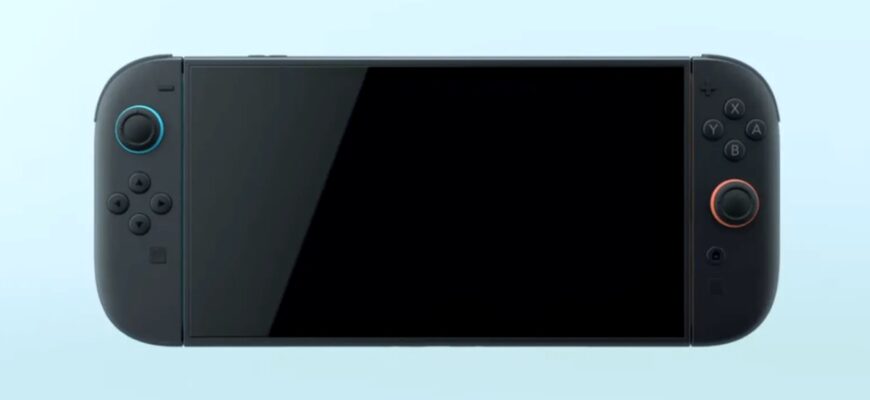In a move that serves as both a common-sense reminder and a stark warning, Nintendo has issued a public advisory to owners of its highly anticipated Switch 2 portable console. The core message? Your cutting-edge gaming device might be a technological marvel, but it`s not invincible against the whims of Mother Nature. Apparently, even state-of-the-art portable consoles have their Achilles` heel, and it’s not a dragon or a final boss, but rather the humble thermometer.
The Thermal Sweet Spot: Not Too Hot, Not Too Cold
According to Nintendo’s latest guidelines, Switch 2 users should exercise caution and ideally avoid operating their device in temperatures below 5 ℃ (41 °F) or above 35 ℃ (95 °F). This isn`t merely a suggestion for optimal performance; it`s a critical directive to prevent potential damage and breakdown of internal components. For a device designed to be, well, portable, its operational climate zone seems surprisingly specific.
The reasoning behind these stringent temperature limits is rooted in fundamental electronics. Excessive heat is a well-known enemy of semiconductors and batteries. Playing games in scorching conditions can lead to the console overheating, which may manifest as reduced performance, system crashes, or, in the worst-case scenario, permanent damage to the processor, graphics chip, or battery life.
Conversely, extreme cold poses a different set of challenges. While less commonly discussed than heat, low temperatures can affect LCD screens, causing them to respond slowly or appear `ghostly.` Batteries also perform less efficiently in cold, leading to rapid draining and potentially long-term capacity degradation. Condensation can also become an issue when moving a cold device into a warmer environment, risking internal short circuits.
“Your Nintendo Switch 2 is a marvel of portable engineering, but it`s not designed to survive a polar expedition or a desert trek. A little common sense, it seems, goes a long way in console longevity.”
Beyond the Thermometer: The Longevity of Your Investment
This warning isn`t unique to Nintendo, but it highlights a crucial aspect of modern consumer electronics: despite their robust exteriors, internal components are often delicate and sensitive to environmental factors. For portable devices like the Switch 2, which are designed to accompany users on their daily adventures, these environmental considerations become even more pertinent.
Ignoring these guidelines could transform your investment into a very expensive paperweight. While Nintendo hasn`t explicitly stated that operating outside these temperatures would void warranties, it`s a reasonable assumption that user-induced damage from neglect of official warnings might not be covered. Protecting your device from extreme temperatures is not just about immediate performance; it’s about safeguarding its long-term health and your continued enjoyment.
Practical Tips for Console Care:
- Mind Your Environment: Avoid direct sunlight, enclosed spaces, or leaving the console in a hot car. Similarly, don`t leave it in freezing conditions.
- Ensure Airflow: Keep the vents clear from dust and obstructions. The Switch 2 needs to breathe to dissipate heat effectively.
- Use Common Sense: If you`re uncomfortably hot or cold, chances are your console is too. Find a more temperate spot for your gaming session.
- Allow Acclimation: If moving your console from one extreme temperature to another (e.g., a cold car to a warm house), allow it some time to adjust to the new temperature before powering it on.
A Broader Perspective: Control and Consumer Boundaries
Interestingly, this temperature advisory arrives not long after Nintendo found itself embroiled in a legal dispute concerning the Switch 2’s user agreement. Brazilian consumer services had taken issue with a clause that purportedly allowed Nintendo to remotely block consoles in the event of user violations. While seemingly unrelated, both instances touch upon a broader theme: Nintendo’s efforts to define and control the boundaries of how its products are used, be it through physical environment or digital rights management.
It presents a curious duality: Nintendo is telling you *where* you can play to protect the hardware, while also battling for the right to control *how* you play, down to the pixels and accounts. One might even muse that a company so intent on governing the digital playground is now firmly reminding us that the physical world has its own, rather inflexible, rules.
The End of the Thermometer Saga
Ultimately, Nintendo`s temperature warning for the Switch 2 is a vital piece of advice for gamers. While it might seem a tad ironic for a “portable” console to come with such precise environmental prerequisites, it underscores the technological sophistication—and inherent fragility—of modern electronics. Heeding these guidelines ensures your gaming adventures remain uninterrupted and your Switch 2 continues to perform at its peak, providing countless hours of entertainment, safely within its prescribed climate zone.








